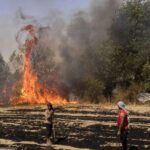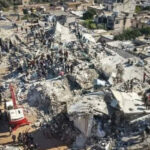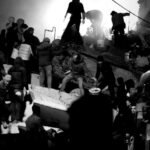Marash, officially Kahramanmaraş and historically Germanicea (Greek: Γερμανίκεια), is a city in the Mediterranean region of Turkey North Kurdistan and the administrative centre of Kahramanmaraş province. Before 1973, Kahramanmaraş was officially named Maraş, and later, it attained the prefix “Kahraman” (Turkish word from Persian origin meaning “heroic” or “brave”) to commemorate the Battle of Marash.
The city lies on a plain at the foot of Mount Ahır. The city is best known for its distinctive ice cream which is thick enough to cut with a knife and fork. Several internationally known Turkish ice cream companies started their business in Kahramanmaraş, and thousands of people visit the city because of its ice cream.
Kahramanmaraş Airport has flights to İstanbul and Ankara.
After the First World War, Marash was controlled by British troops between 22 February 1919 and 30 October 1919, then by French troops, after the Armistice of Mudros. It was taken over by the Turkish National Movement after the Battle of Marash on 13 February 1920. Afterward a massacre of Armenian civilians took place. Roving Turkish bands threw kerosene-doused rags on Armenian homes and laid a constant barrage upon the American relief hospital. The Armenians themselves, as in previous times of trouble, sought refuge in their churches and schools. Women and children found momentary shelter in Marash’s six Armenian Apostolic and three Armenian Evangelical churches, and in the city’s sole Catholic cathedral. All the churches, and eventually the entire Armenian districts, were set alight. When the 2,000 Armenians who had taken shelter in the Catholic cathedral attempted to leave, they were shot. Early reports put the number of Armenians dead at no less than 16,000, although this was later revised down to 5,000–12,000.
In December 1978, the Maraş Massacre of leftist Alevis took place in the city. A Turkish nationalist group, the Grey Wolves, incited the violence that left more than 100 dead. The incident was important in the Turkish government’s decision to declare martial law, leading to the military coup in 1980.
In February 2023, a powerful 7.8 magnitude earthquake struck near Kahramanmaraş, causing widespread damage to the city.
In 1913, the town was home to 45,000 Turks and 30,000 Armenians, while other ethnic groups had very small representation. As of 2017 the population of the city was 513,582.






